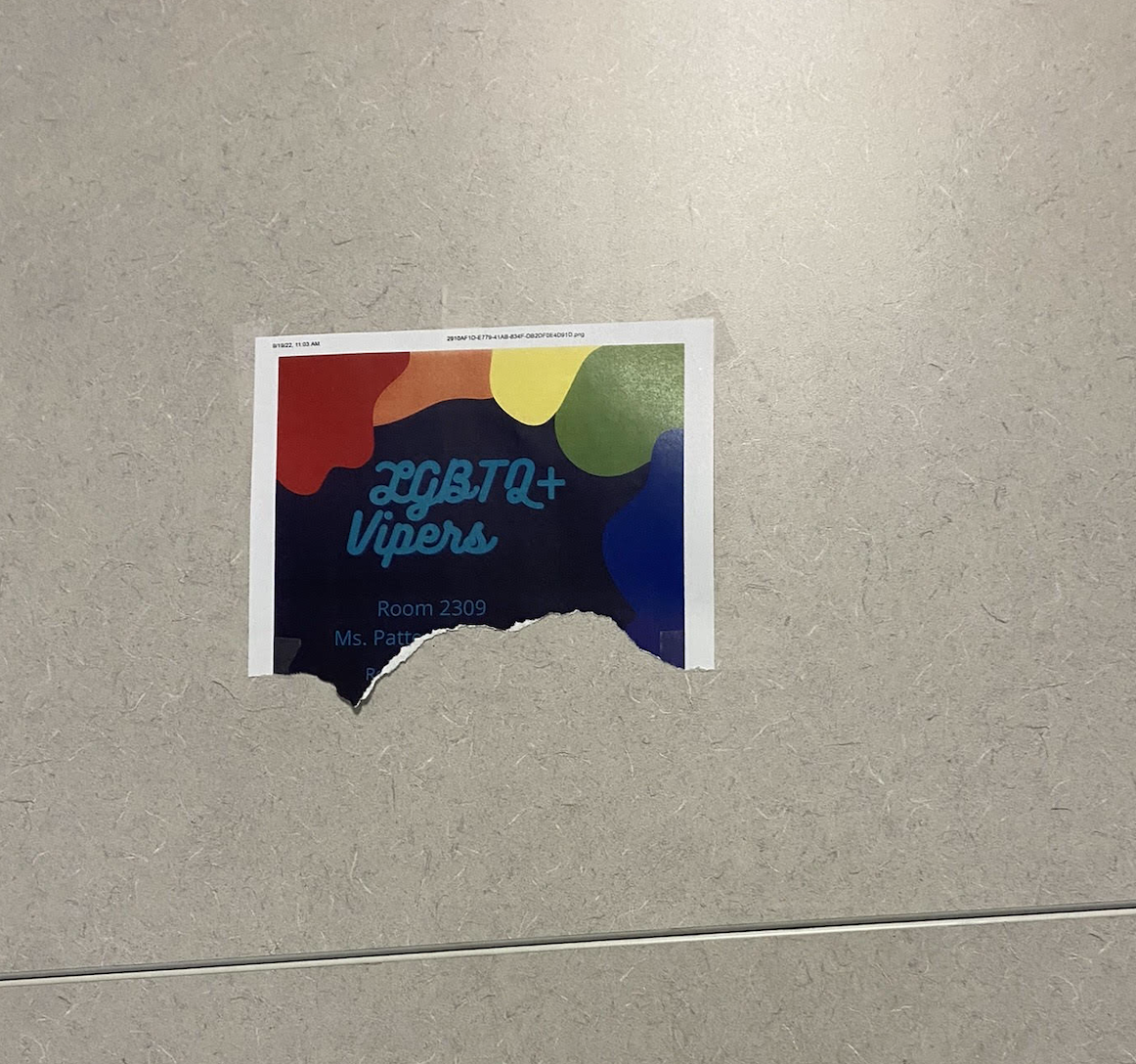In 45 seconds, you could wash a couple dishes, send an email, or grab a snack from the pantry. While 45 seconds feels like an insignificant amount of time to the average person, queer kids feel differently. Every 45 seconds, at least one queer teen attempts suicide.
Throughout history, queer people around the world have lived as targets of unfair treatment and bullying. This issue mainly targets teenagers; especially those who look different, act different, or tend to stay quiet in the classroom. While no true justification exists for treating a person badly, some blame it on internal bias, turmoil, fear of the unknown, or religion. No matter the reason, hurtful words will always have the same detrimental effect on queer youth.
“I take it very seriously,” assistant principal Collin Fletcher said. “We have the LGBTQ+ club, and the signs get posted, and sometimes the signs get taken down. It’s difficult to enforce that. It’s my opinion that we should print off hundreds of copies and just put it right back up and send a clear message – that Vandegrift is a safe space. And somebody tearing down that sign isn’t going to stop that club from existing or stop us from welcoming and recognizing our LGBTQ+ students.”
Fletcher, along with the rest of the administration team, fights against hate within the school. In the 2022-23 school year, students tore the LGBTQ+ club posters off the walls of the hallway, and Fletcher noted that he had a personal conviction to prevent the unfair treatment of queer people.
“We’ve come a long way with how accepting people are of the queer community,” junior Asher Gerson said. “But, it’s so sad when people get treated like that. It’s disappointing to see. I was walking with one of my friends at lunch, and some football guys walked past, and they were jokingly like, ‘Oh my God, what’s your pronouns?’ I try not to pay attention to it.”
Recalling a personal experience, Gerson repeated how annoying and unnecessary the encounter felt. They noted that an experience like that often feels humorous when they’re the victim, and they don’t take it seriously. Gerson looks openly queer, sporting dyed hair, eccentric makeup, and free-spirited clothes. They stated that people who present openly queer or look different receive harassment more often.
“I have a special place in my heart in wanting to be an ally and defending people,” Fletcher said. “I can’t speak from personal experience, but I was a theater major in college and many of my dearest friends have been gay and queer and transgender. I think that [unfair treatment] will lead to anxiety and depression.”
Mentioning some studies, Fletcher notes the connection between queerness and poor mental health. Those studies prove LGBTQ+ youth’s probability of attempting suicide to be four times that of their peers. Additionally, 45 percent of queer youth seriously considered attempting suicide in 2022, including over half of transgender teens.
“It has led to self harm,” Fletcher said. “If you look at the rates of self harm and ideation for students who are in the LGBTQ+ community, they’re proportionally higher than they are in people who are not in that community. And that means there’s a special obligation we have to make sure we’re looking after our students who may be more susceptible to those types of thoughts and beliefs.”
In 2020, the CDC did a study on the treatment of queer students at school and found that 43% of transgender students experience bullying on school property as opposed to just 18% of their cisgender peers. Fletcher touched on how people’s internal biases or belief systems can affect how they treat people who look different.
“You don’t want to get attention drawn to yourself,” junior Ari Marx said. “Quiet people get bullied more. I feel like whenever someone’s outgoing, people notice them more so it’s harder to get away with bullying them. But if you’re quiet, and someone that people tend to forget about, then it’s much easier to get targeted. Also religion has been used as an excuse, like ‘God made it this way.’”
Marx brought up religion a lot, and how people use it as an explanation for their personal and often hateful convictions. Marx mentioned that religious people in Texas have a history of using religion to have their way, like how settlers justified slavery in the name of religion. Michigan State University stated that LGBTQ+ youth reported higher rates of homophobia and stigma in more rural areas, mainly where there isn’t a high population of queer people.
“Everybody on the planet is biased in some way or another,” Fletcher said. “We all have preconceived notions that come from our life experience, from the beliefs of our family, our friends, those that we associate with, everything you watch, everything you read informs your perspective of the world. And I think those biases have a tendency to come through when people are different and have different belief structures.”
Fletcher noted that, many times, children act the way they do because of their upbringing. A study by the University of Queensland in Australia showed that children copy everything they see an adult do, even if the action seems irrelevant. This can explain the noticeable pattern between hateful children and hateful parents.
“I think that it’s fear of the unknown,” Fletcher said. “If we’re being honest, a lot of the loudest critics of LGBTQ+ populations are usually hiding something, whether it be an internal turmoil or internal battle. I make it a point in life to assume positive intent about people. When we don’t know what’s going on in their lives, I assume that what they’re thinking is positive and they want the best experience. That makes it a lot more tolerable to be in class.”



Toon • Apr 3, 2024 at 8:51 am
Very thoughtful and well said!
iglesias • Dec 22, 2023 at 11:56 am
amazing job i am SO PROUD!